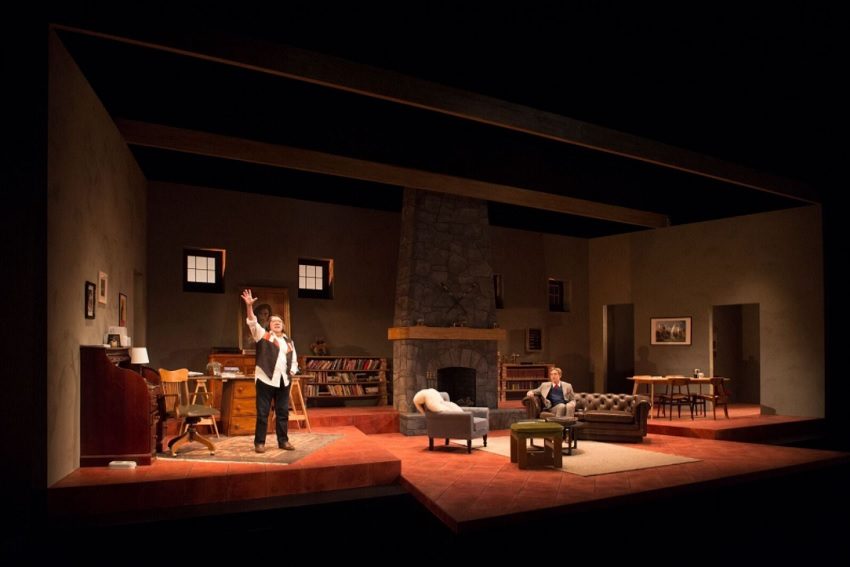Theatre Review: Switzerland

Switzerland likes to toy with its audience. As with the cat and mouse games Patricia Highsmith played in her own thrilling tales, Joanna Murray-Smith’s script teases us with humour, foreshadowing and ominous, impending doom.
We are introduced to Patricia Highsmith’s Swiss home with a foreboding violin soundtrack, a staple of the thriller genre since Hitchcock’s Psycho. Highsmith (Sandy Gore) strides onto the stage, straight-backed and with deliberate strength. This is no tottering cliché of an old lady. This is the Patricia Highsmith, and while she might be dying, she’s got dignity and purpose, damn it.

Sandy Gore as Patricia Highsmith
Edward Ridgeway (Matt Crook) a publishing agent determined to squeeze one last Tom Ripley novel from the ageing Highsmith, arrives soon after and the mind games begin. The pair spars with words on this single set of Highsmith’s comfortable living room, which is destined to become a psychological battleground as the show rolls on. It’s a space decorated with bookshelves, antique furniture and enough weapons to put Ernest Hemingway to shame. Ever the self-contradiction, Highsmith is an intellectual who admires murder and rails against the patriarchy, but hates Jews and blacks.
Murray-Smith’s snappy dialogue keeps things light throughout the beginning of the play and the audience laughs frequently as much at the jokes as to relieve the tension that builds between Chekhov’s knives and explicit foreshadowing. Ridgeway starts out as an annoyingly verbose faux-intellectual twit with strong playing from Crook, while Gore’s Highsmith is both sparing and devastating with her efficient, pointed tongue. The players do occasionally trip over the dense script, but the words are the highlight here, and the audience finds themselves torn over who to despise or admire throughout.
 Matt Crook as Edward Ridgeway
Matt Crook as Edward Ridgeway
That said, the play’s silent moments also shine. Nicely choreographed, deliberate movements across the open set ramp up tension and reveal deeper insights into these characters’ motivations, with credit here to Nescha Jelk’s direction. Nigel Levings’ subtly sharp lighting and that hair-tingling score from Jason Sweeney also serve to reinforce the feeling that something here is awfully amiss.
In this fictitious re-telling of Patricia Highsmith’s final days the audience has a pretty good idea that she’ll be dead by the end of the show. But the burning question for us, as well as the characters on stage is precisely how she’ll meet her demise, and just how much of this twisting tale could fit into one of her own.
Photography: Andy Rasheed